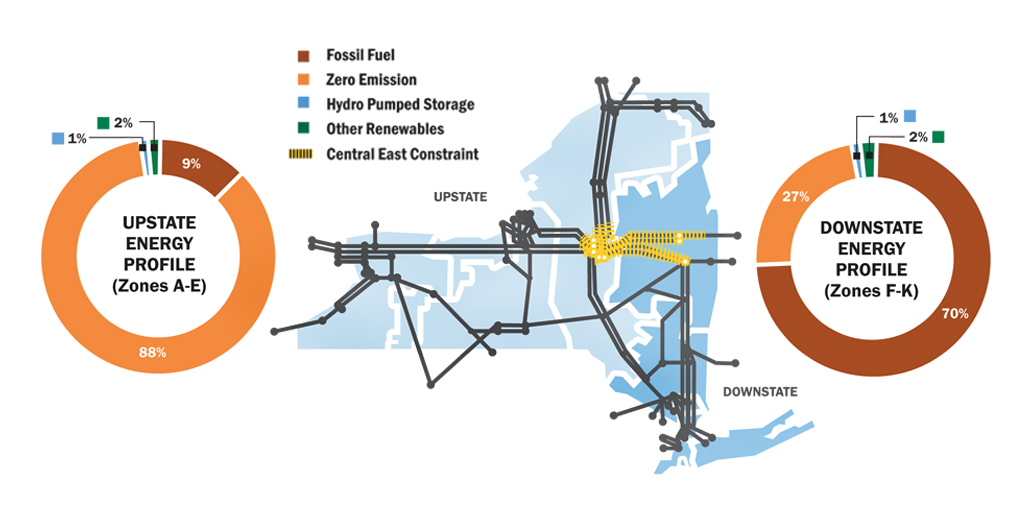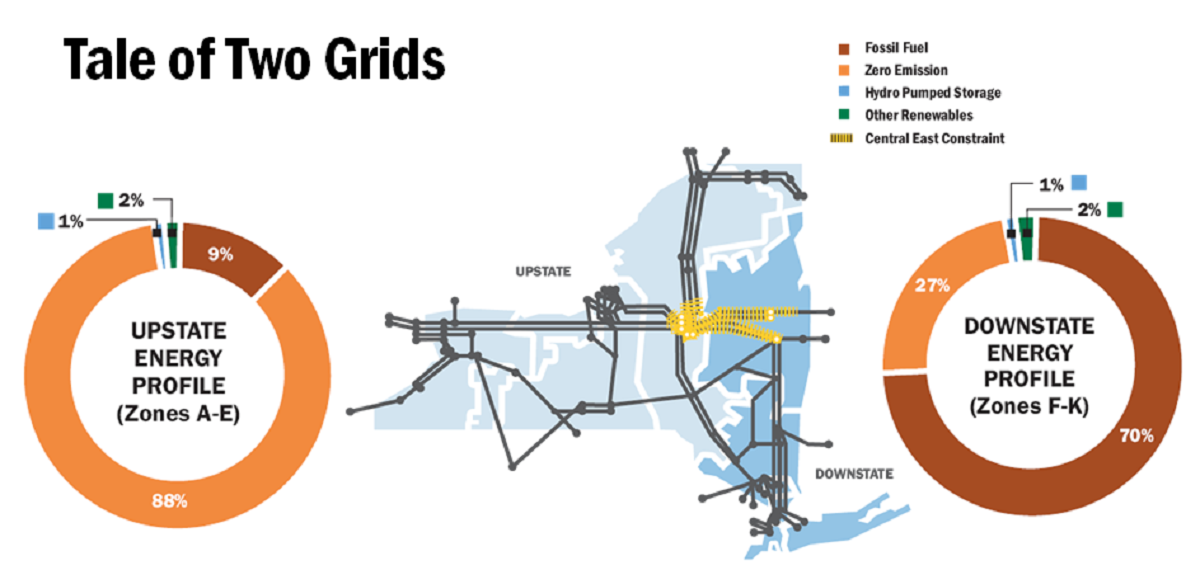NYISO’s Great Expectations for a Grid in Transition

New York’s centralized bulk power system, which has existed primarily to deliver reliable energy to every corner of the Empire State, is increasingly viewed as a critical element to achieving broader public policy goals for clean energy.
Additionally, the advancement of new technologies continues to push the boundaries of what consumers expect from the grid. The NYISO sees these challenges clearly, and embraces the work and change necessary to meet them. We understand that these new expectations for the grid require an examination of the markets and planning processes that shape it. We address these challenges in these year’s Power Trends 2018 which includes the following themes.
A Grid in Transition
Historically, electric power flowed from generators across a vast network of transmission and distribution lines before reaching consumers. Energy usage and peak demand grew incrementally, year by year, and growing demand for energy was met through physical expansion of the grid to increase its generating and delivery capacity. While demand on the grid may no longer be growing at historical levels, planning and operating the grid has grown more complex. Technology, economic forces, are shaping a more dynamic grid. Public policies are expediting this transformation.
In collaboration with policymakers and market participants, the NYISO will continue to leverage our expertise in operating New York’s power grid, advanced energy market design, and open and transparent system planning, in order to reliably and efficiently respond to the energy needs of all New Yorkers. The NYISO’s Power Trends 2018 report provides information and analysis on current and emerging trends that are working to transform the power grid and wholesale electricity markets. Shifting patterns of demand for electricity serve to influence how investors, policymakers, and consumers view electricity production, transmission, and consumption.
These patterns include:
- Energy efficiency and distributed energy resources that shape energy usage.
- Infrastructure replacement and expansion to address risks to aging facilities, support of public policy goals, and meet the needs of a more dynamic grid.
- Economic influences led by low natural gas prices and changing consumption forecasts.
- Public policies aimed at reducing emissions and expanding the use of renewable power resources.
- Bolstering grid resilience through effective federal, state, and local reliability rules, effective grid operations and planning, and effective market design.
Transmission Expansion to Meet Public Policy Needs
In Power Trends 2017, the NYISO introduced the concept of New York’s Tale of Two Grids —a reference to the fact that the characteristics of upstate’s energy sector differ dramatically from those of the downstate sector. Upstate is largely supplied by clean energy resources, yet consumes less energy in comparison to downstate. In fact, zero-emitting resources accounted for approximately 88% of the energy produced upstate. Downstate, which consumes approximately 66% of the energy in New York, received 70% of its energy from fossil fuel-fired generation in 2017. While some energy flows from upstate to downstate, transmission constraints on the grid limit the ability to supply more clean energy to downstate consumers. The NYISO is working closely with policymakers and stakeholders to address these challenges

Meeting the Challenge of a Grid in Transition
Ultimately, if transmission constraints are not alleviated, the Tale of Two Grids will, over time, unfold into a Tale of Two Markets, where there are growing disparities in bulk power costs and system investment needs in different regions of the state. Working with stakeholders, the NYISO intends to evaluate opportunities to leverage competitive wholesale market products and services to address these issues and bolster the resiliency of New York’s bulk power system. The changing portfolio of resources serving the electric needs of New York will require a careful and comprehensive review of the NYISO’s existing market products and operational practices.
To learn more, download Power Trends 2018.

